Otherworldly Observations
A few years ago, back when this idea of the otherworld bleeding through began to make its way into Pagan/Witch discourse, I had a curious incident at the side of a river with a witchy friend. We’d been on a walk together as we often did back then in the pre-plague years, end eventually (unsurprisingly) we’d begun to “talk shop.” You see, both of us had noticed the uptick in otherworldly activity, in a similar way to how hunters are often the first to notice disease in deer.

Now, please don’t get me wrong. I’m not comparing the Other with disease here (I wouldn’t dare). I’m just saying that as magical practitioners, we tend to be among the first to notice this kind of thing.
But we were both also getting messages from multiple people. Moreover, these were often from people who didn’t ordinarily experience our kind of strangeness, and that stood out.
At some point in our discussion, I mentioned the fact that a witch’s knowledge and power was believed to come from otherworldly sources where I’m from. And I wondered what the effects of this otherworldly “bleed” would have on magic and what we humans can do with magic. Naturally (because I’m an idiot like this), I grabbed a stick and drew a sigil I use when creating portals into the sand and silt of the riverbank.
The effect was almost instantaneous: a shifting sensation that used to take more effort to achieve.
I closed it and scrubbed it from the sand almost as soon as my friend and I noticed the shift. But I’ve been musing about the changing limits of magical possibility, consensus, and opposition ever since.
John’s Rising Currents
Discourse is a funny old thing. Sometimes we can have an observation or thought sitting in the soil of our mind for a long time without writing about it. But then, something will happen to water it, and it’ll take root and grow.
(As an aside, it’s interesting how we refer to events that spark action as “precipitating events.” Soil and seeds. Soil and seeds.)

I’m a firm believer that most things have their season. And if the blog John Beckett posted this morning is anything to go by, then this subject’s season has come.
In The Currents of Magic are Getting Stronger, John Beckett makes the same observation I did at the side of that river. Ironically, he uses the analogy of a river running higher and faster to explain his observation that the “currents” of magic are getting stronger and enabling an increase in possibility/greater results. He also goes on to cautiously suggest some possible causes, and this is where I feel like I have something to add.
Magic and the Otherworldly
I’ve blogged about this before, but in the historical witchcraft traditions where I’m from, the source of the witch’s power and knowledge was otherworldly. This is where we get into familiars and hierarchy. These are all complex topics, and more than I can cover in this blog, so I encourage you to read the posts I’ve linked here if you want to go deeper. That’s not to say that what we call the “otherworldly” is the only possible source of magic and knowledge though, nor the only possible framework through which these changes can be understood.
We also cannot ignore the fact that most of the discussion on this topic is coming from US sources. I’m not saying that strange things aren’t also happening elsewhere—some of my mother’s stories from back in Lancashire have been decidedly stranger than usual of late. But we also cannot assume that just because this stuff is happening here, it’s happening everywhere.
In my opinion, an important consideration in this discussion of how widespread or localized this “trend” is, boils down to the relationship between a culture and the otherworldly beings they interact with. ( Assuming the relationship between Otherworldly beings and magic is found within those cultures in the first place.)
Fairy-like beings are found in lore pretty much all over the world, but not all cultures have responded in the same way to their presence over time. Some cultures—such as many Western European cultures—equated them with demons and/ fallen angels, destroyed their sanctuaries, and drove them out after humans converted to Christianity (LeCouteux, Claude. Demons and Spirits of the Land. Pp. 23-28, 68-80).
And I’m not saying that folk practices involving the otherworldly didn’t still exist, of course. We know they did. But as I’ll hopefully make clear in the next section, consensus (like all stories) is a powerful and often binding thing.
This process wasn’t limited to Western Europe either. If Cotton Mather is to be believed in his Wonders of the Invisible World, early colonizers in what would become the US also drove out “devils.” He even goes on to blame the apparent preponderance of witches in Salem on a counterattack by the devils, thus retaining that link between witches and the Otherworldly in his interpretation of events.
The otherworld is bleeding through, the devils are coming back, and they’re bringing us witches with them?
However in some places, maybe the Otherworld didn’t need to bleed back in from anywhere else at all.
Reality, Consensus, Possibility, and Feedback Loops
Another story now. Back in the mid-2000s, I came across an interesting interaction at a Pagan Conference in England between a gentleman from an African country (I didn’t get chance to ask him which), and a vendor who was selling these tacky, crystal-encrusted “wish books.” For her, even as someone who considered herself a witch, these books were just a bit of fun and to be commonly understood as such. There was no real expectation that writing your wishes in them would yield any concrete results. But her potential customer clearly had far greater expectations of the “wish book” than her and kept asking her in a deadly serious voice if it really worked.
As you might imagine, this became increasingly more uncomfortable the longer it went on.
To me though, as an observer, I couldn’t help but be struck by the wildly different expectations of magic that were revealed through this interaction. Again, this is something I’ve written about before, but much of what we commonly call “reality” is more accurately described as consensus. We take in far more information through our ordinary senses per second than we can even be conscious of, let alone store in our memories. Moreover, studies have shown that we’re more likely to become conscious of/retain the information that aligns with our existing beliefs and biases.
This is impossible to separate from consensus. I believe that consensus, in a sense, both delineates and limits the boundaries of possibility.
From this perspective, the more people that experience and/or interact with the strange and Otherworldly, the more the consensus that THIS DOES NOT HAPPEN IN “REALITY” is challenged. And over time if enough people start to have these experiences, the consensus of a culture shifts to include them in the realm of possibility. This in turn, creates a kind of feedback loop in which that consensus is progressively widened. (A process that is not so different from what you find in a propaganda campaign.)

This is theory, but I would argue we have historical proof of the reverse: the binding effects of consensus.
I’ve written about this before, but we can see this in how concepts of dreaming change in Northwestern Europe after the advent of Christianity. People went from considering dreams a place where they could encounter the dead and otherworldly in a concrete way, to a state of consciousness in which people only experience nonsensical or anxiety-driven scenarios.
(Again, another way of driving out the otherworldly, I might add.)
This is all very exciting to think about, but I think we need to also be cautious here too.
The Other Side of the Coin
Within the Pagan and Witch communities, I think there is a tendency to assume that we are the only ones out there working magic. We forget that Christians also have their magic, and that a more forgiving consensus is also going to benefit them as well.
Unfortunately for us, they tend to be very much against our kind of magic, and they still largely label the Other as “demonic.” They also have an established tradition of weaponized “prayer” in the form of “prayer warriors,” who often work together in groups and are capable of a level of faith and zeal very few Pagans and Witches can muster.
Another area of concern is that I suspect a lot of the more “fringe” Christians are feeling the same uptick in activity as we are. I’m far from an expert on this subject, but I keep an eye on some of these groups as part of my omen-taking, and this is something I’ve noticed. There seems to have been an uptick in videos of “demonic possession” over the past few years. And talk of spiritual warfare against demons and witches seems to have become more common. (Here’s a recent example.) There have also been large events such as the Jericho March earlier this year. Participants of the march blew shofarim and marched around the Capitol building seven times while praying- a clear imitation of the Israelite siege of the city of Jericho. The next day was 1/6, in case you were wondering about their intentions.
If there’s anything we can learn from history when it comes to religious fundamentalists of a certain kind, it’s that this usually doesn’t go well for us. The more people believe in the possibilities of magic in general, the more they tend to blame magic (and practitioners) when things go wrong. So, the Otherworldly may be more present, and “currents of magic” may be rising and growing in strength, but they’re not without a brewing backlash.
I just hope we don’t wind up in a place where humans meet the same fate as books.

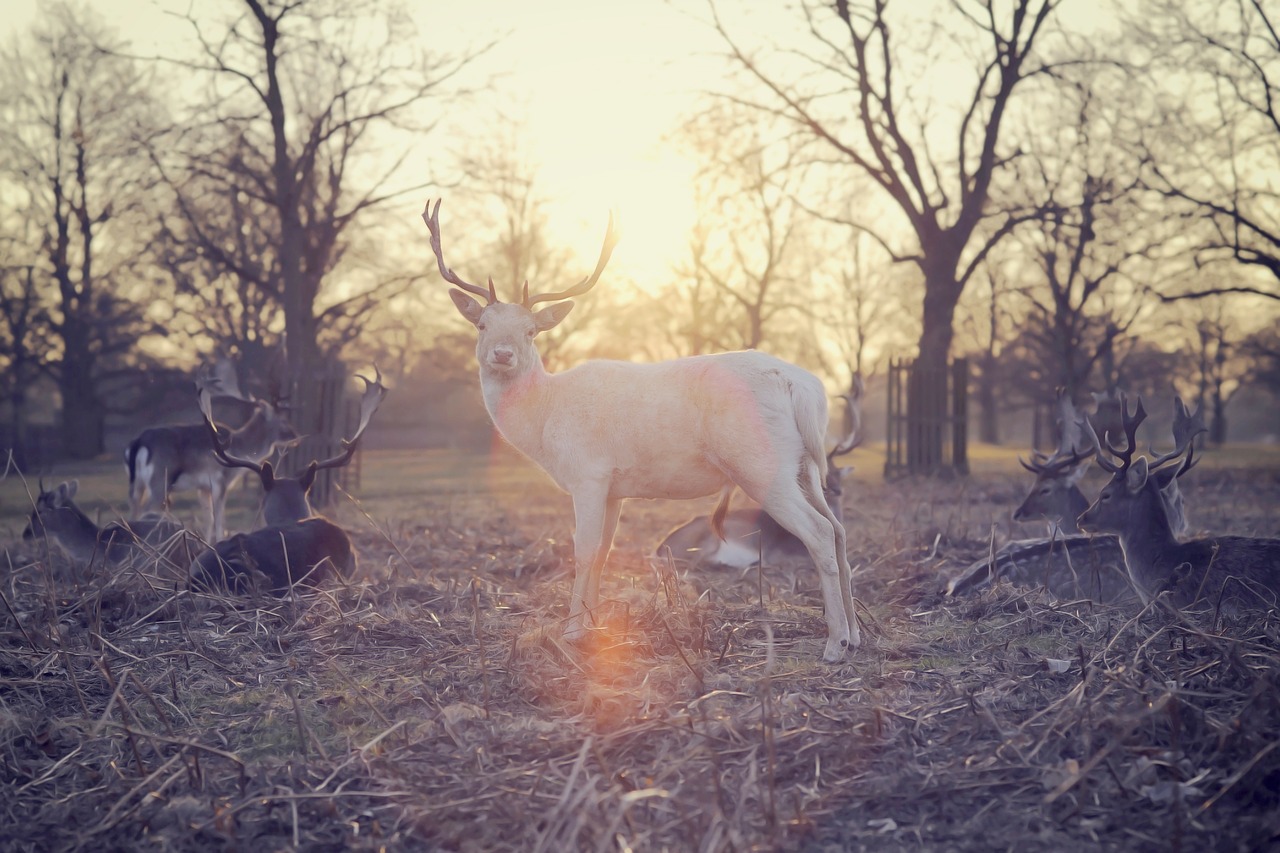



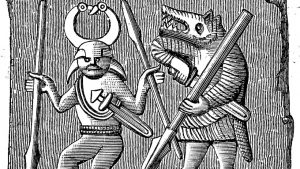

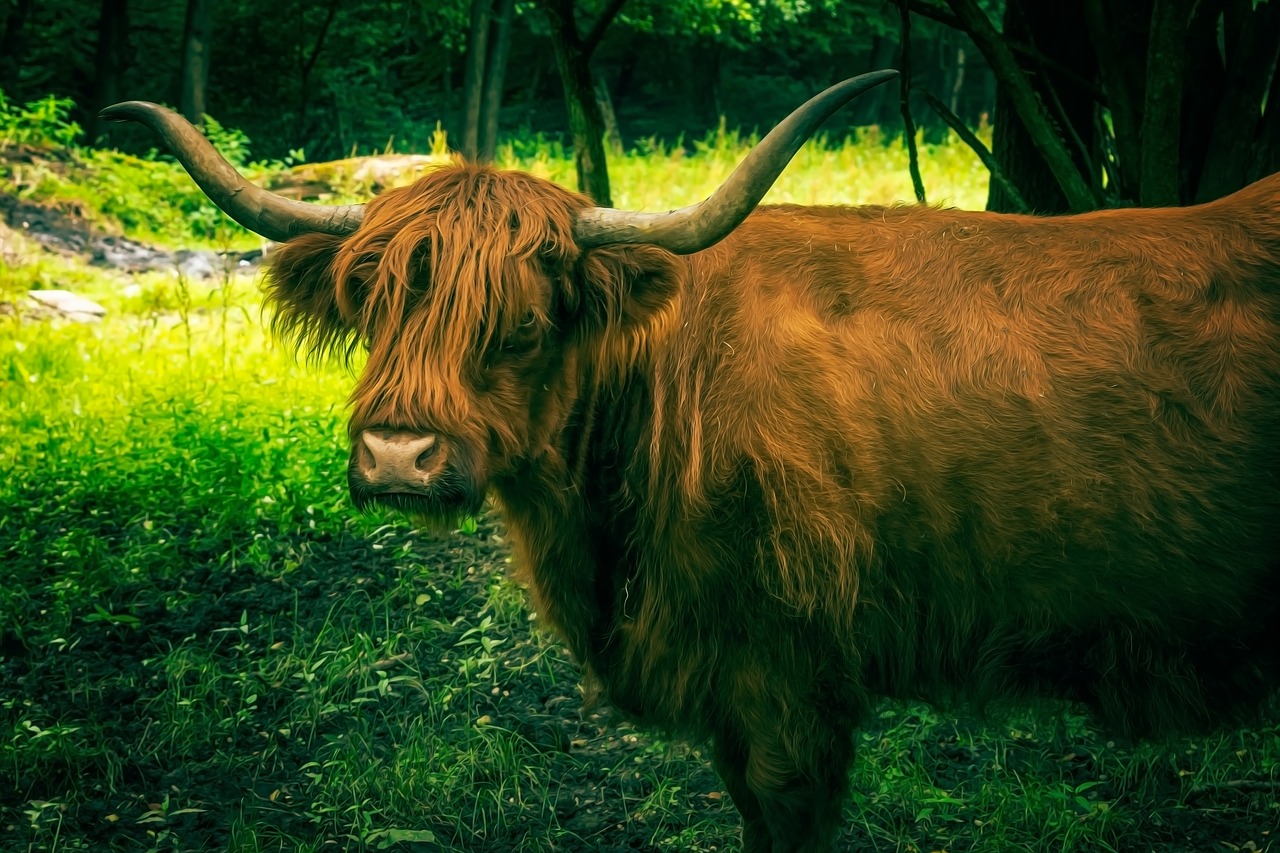
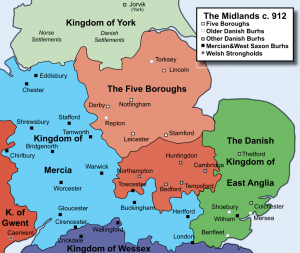

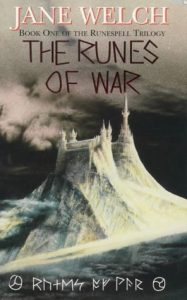
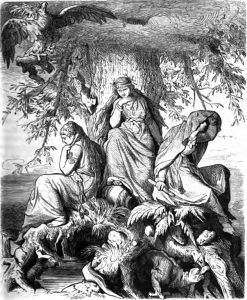



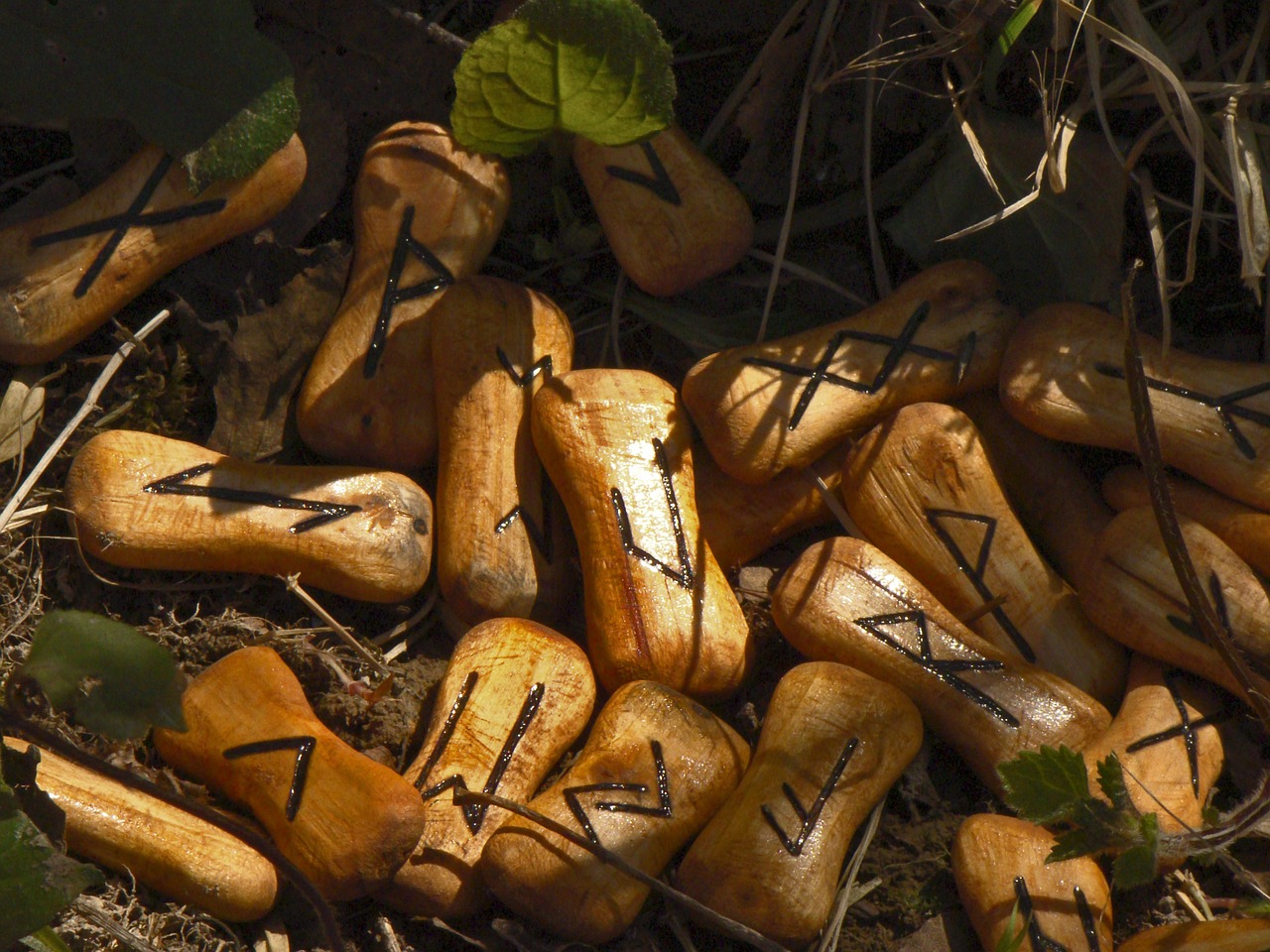
 woman on another table called me over to her. She’d decided I needed to have a rune reading from her, and I, several pints into the evening, decided to go along with it.
woman on another table called me over to her. She’d decided I needed to have a rune reading from her, and I, several pints into the evening, decided to go along with it.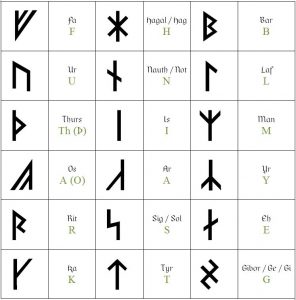
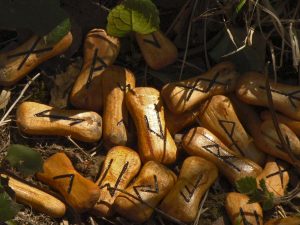 around forty-five years now, in a religious movement that’s not really been around for a whole lot longer. In many ways, the origins story of modern rune magic parallels that of Heathenry itself in that many of the early founders of modern Heathenry were also folkish/völkisch. (Btw I really recommend you pick up
around forty-five years now, in a religious movement that’s not really been around for a whole lot longer. In many ways, the origins story of modern rune magic parallels that of Heathenry itself in that many of the early founders of modern Heathenry were also folkish/völkisch. (Btw I really recommend you pick up 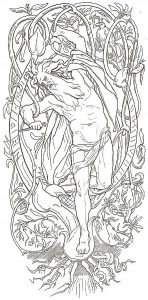

 dream journal that lives in an app on my phone with a secondary residence in the cloud. Other people have dedicated paper and pen journals that they keep in a handy-to-reach place for when they wake up.
dream journal that lives in an app on my phone with a secondary residence in the cloud. Other people have dedicated paper and pen journals that they keep in a handy-to-reach place for when they wake up. This is a space I find myself in quite often. I’m never alone there but in classes full of what I suspect may be other sleeping witches. The environment is extremely strict – it would make a Victorian school room look lax. And there’s an underlying sense of danger should you mess up. But as with all schools, there are lessons here too (and not only in etiquette). I’ve received some of my most interesting magical lessons from this school, and yes, they often assign homework too.
This is a space I find myself in quite often. I’m never alone there but in classes full of what I suspect may be other sleeping witches. The environment is extremely strict – it would make a Victorian school room look lax. And there’s an underlying sense of danger should you mess up. But as with all schools, there are lessons here too (and not only in etiquette). I’ve received some of my most interesting magical lessons from this school, and yes, they often assign homework too.
 Ever since I went to Iceland in 2018, I feel like a part of myself sort of dug in there like some kind of anchor for when I die. There was a sense of home to Iceland, and so it’s probably not surprising that I end up there quite often in my dreams. Out of all the recurring places, Iceland, and especially northern Iceland, probably features the most. And these dreams almost always come with a message or involve elves in some way.
Ever since I went to Iceland in 2018, I feel like a part of myself sort of dug in there like some kind of anchor for when I die. There was a sense of home to Iceland, and so it’s probably not surprising that I end up there quite often in my dreams. Out of all the recurring places, Iceland, and especially northern Iceland, probably features the most. And these dreams almost always come with a message or involve elves in some way. When we think about the Otherworld, I think there’s a tendency to imagine it as some old-fashioned, almost Renn-Faire-looking kind of deal. And don’t get me wrong – in my experience, those places do exist. But I’ve also found that there are a lot of modern-looking places associated with the Otherworld as well.
When we think about the Otherworld, I think there’s a tendency to imagine it as some old-fashioned, almost Renn-Faire-looking kind of deal. And don’t get me wrong – in my experience, those places do exist. But I’ve also found that there are a lot of modern-looking places associated with the Otherworld as well.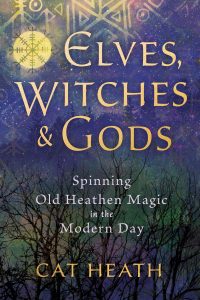 Witches and Gods: Spinning Old Heathen Magic in Modern Day. If a somewhat atypical look at Heathen worldview and magic with an emphasis on experimentation and practice interests you, then it may be right up your alley.
Witches and Gods: Spinning Old Heathen Magic in Modern Day. If a somewhat atypical look at Heathen worldview and magic with an emphasis on experimentation and practice interests you, then it may be right up your alley.  something being unleashed into the world, and I knew then and there that what I had spoken into the world would come to pass; that my victim would fall from his ladder at work.
something being unleashed into the world, and I knew then and there that what I had spoken into the world would come to pass; that my victim would fall from his ladder at work.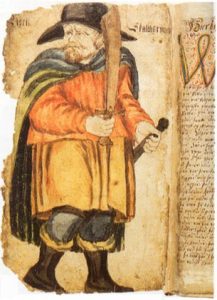
 is sufficiently complete for now.
is sufficiently complete for now.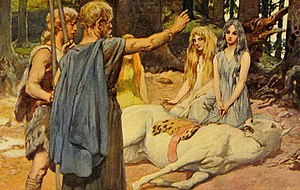 “Father of Galdr” (as he was named in Baldrs Draumar) is both explicit and well-established, and not just in the ON sources either (Simek 242). Woden is the only Heathen god to be mentioned in the OE magico-medical manuscripts; it is he who rests at the center of the so-called “Nine Herbs Charm” found in the Lacnunga. And it is Woden who is depicted chanting a spell over an injured horse’s leg in the Second Merseburg Charm (Waggoner, xv).
“Father of Galdr” (as he was named in Baldrs Draumar) is both explicit and well-established, and not just in the ON sources either (Simek 242). Woden is the only Heathen god to be mentioned in the OE magico-medical manuscripts; it is he who rests at the center of the so-called “Nine Herbs Charm” found in the Lacnunga. And it is Woden who is depicted chanting a spell over an injured horse’s leg in the Second Merseburg Charm (Waggoner, xv).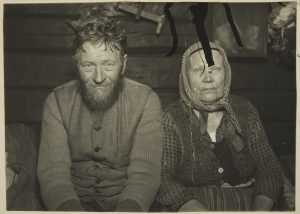
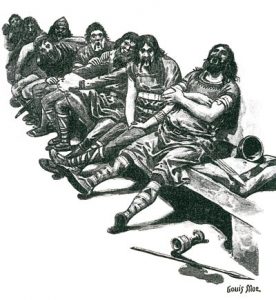 “These men asked Halfdan to attack Hardbeen and his champions man by man; and he not only promised to fight, but assured himself the victory with most confident words. When Hardbeen heard this, a demoniacal frenzy suddenly took him; he furiously bit and devoured the edges of his shield; he kept gulping down fiery coals; he snatched live embers in his mouth and let them pass down into his entrails; he rushed through the perils of crackling fires; and at last, when he had raved through every sort of madness, he turned his sword with raging hand against the hearts of six of his champions. It is doubtful whether this madness came from thirst for battle or natural ferocity.”
“These men asked Halfdan to attack Hardbeen and his champions man by man; and he not only promised to fight, but assured himself the victory with most confident words. When Hardbeen heard this, a demoniacal frenzy suddenly took him; he furiously bit and devoured the edges of his shield; he kept gulping down fiery coals; he snatched live embers in his mouth and let them pass down into his entrails; he rushed through the perils of crackling fires; and at last, when he had raved through every sort of madness, he turned his sword with raging hand against the hearts of six of his champions. It is doubtful whether this madness came from thirst for battle or natural ferocity.”
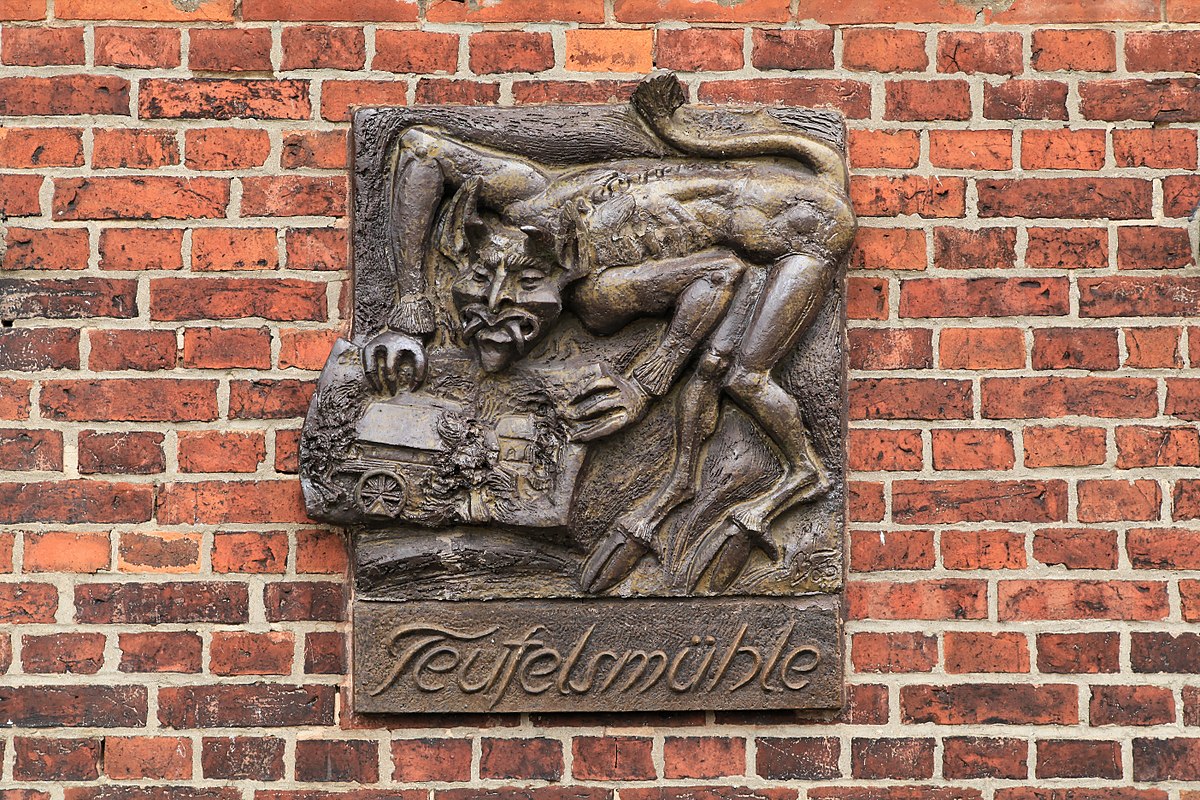
 were though, and soon co-workers began to notice.
were though, and soon co-workers began to notice. trying to look as harmless as possible).
trying to look as harmless as possible).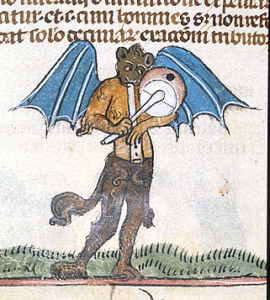
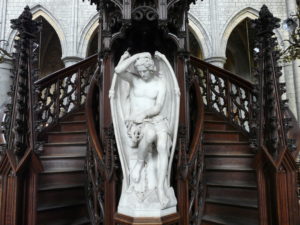


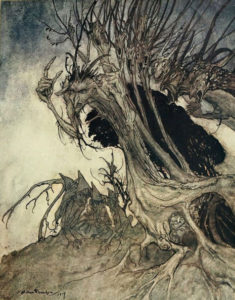 inspiring and capable of producing that curious combination of “dread, veneration, and wonder”. (If your mind found that incongruous in any way, then you have some unpacking to do.)
inspiring and capable of producing that curious combination of “dread, veneration, and wonder”. (If your mind found that incongruous in any way, then you have some unpacking to do.)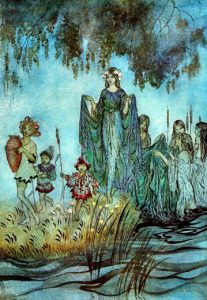
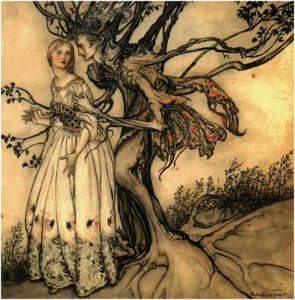 Other beings have produced awe to a lesser degree in me. Instead of outright terror, there’s an edge of caution. Over the years, I’ve noticed that these tend to be the beings who seem less capable of harming me, or at least can only harm me to a lesser degree. And so I’ve learned to listen to those feelings. When not obscured by bullshit ideas garnered from Victorian nonsense and scientific materialism, those feelings can be a useful guide to who you are dealing with and how careful you should be.
Other beings have produced awe to a lesser degree in me. Instead of outright terror, there’s an edge of caution. Over the years, I’ve noticed that these tend to be the beings who seem less capable of harming me, or at least can only harm me to a lesser degree. And so I’ve learned to listen to those feelings. When not obscured by bullshit ideas garnered from Victorian nonsense and scientific materialism, those feelings can be a useful guide to who you are dealing with and how careful you should be.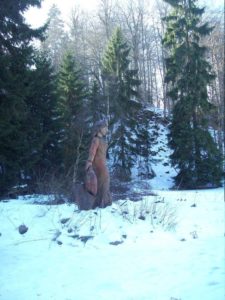 Hulle set not far from Wintersbach. And this is the tale that led me down the rabbithole so to speak. First came the spinning, and then more research and a pilgrimage of sorts to the Hollenteich up on the Hoher Meißner. There, on a frozen pond before a modern statue, I had a deeply holy (and unexpected) experience.
Hulle set not far from Wintersbach. And this is the tale that led me down the rabbithole so to speak. First came the spinning, and then more research and a pilgrimage of sorts to the Hollenteich up on the Hoher Meißner. There, on a frozen pond before a modern statue, I had a deeply holy (and unexpected) experience. But one day, while spinning at the side of a well, she accidentally drops her spindle into the well after pricking her finger.
But one day, while spinning at the side of a well, she accidentally drops her spindle into the well after pricking her finger. made sure to cut herself and throw a spindle into the well before she herself took the plunge is perhaps telling.
made sure to cut herself and throw a spindle into the well before she herself took the plunge is perhaps telling. First the dead pass over a thorny moor (‘Whinny muir’) that will prick them. Then they must pass over the ‘Brig o’Dread’. And then finally, because this is a Christian song, they must roast in Purgatory for a while. But at every turn, these tortures can be mitigated by one’s behavior in life. Those who gave the charity of socks and shoes (‘hosen or shoon’) will find socks and shoes to protect them on the thorny moor. Those who gave the charity of food and drink, will not be shrunk and burned by Purgatory’s fires. (The Brig o’Dread is its own challenge, and I’ll be taking a look at it in the next section.)
First the dead pass over a thorny moor (‘Whinny muir’) that will prick them. Then they must pass over the ‘Brig o’Dread’. And then finally, because this is a Christian song, they must roast in Purgatory for a while. But at every turn, these tortures can be mitigated by one’s behavior in life. Those who gave the charity of socks and shoes (‘hosen or shoon’) will find socks and shoes to protect them on the thorny moor. Those who gave the charity of food and drink, will not be shrunk and burned by Purgatory’s fires. (The Brig o’Dread is its own challenge, and I’ll be taking a look at it in the next section.) century Icelandic poet Þórbjörn Brúnason made a curious mention of the ‘apples of Hel’. And apples also featured as grave goods in both Scandinavian and early English graves. But apples are not only associated with the dead in Norse lore. The apple seems to be both a food for the dead and a substance of renewal for the gods.(Davidson, Gods and Myths of Northern Europe, 165-166).
century Icelandic poet Þórbjörn Brúnason made a curious mention of the ‘apples of Hel’. And apples also featured as grave goods in both Scandinavian and early English graves. But apples are not only associated with the dead in Norse lore. The apple seems to be both a food for the dead and a substance of renewal for the gods.(Davidson, Gods and Myths of Northern Europe, 165-166).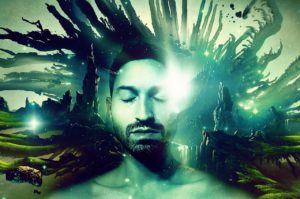 ”Readers familiar with Neil Gaiman’s Sandman series might find some parallels here: the mundus imaginalis is like “The Dreaming,” a realm populated by the dreaming of every being, living or dead, god or human or plant, where each “place” has a geography only inasmuch as it’s necessary for those who visit to travel within it and find the same place again (or visit a place another once visited). In fact, Gaiman likely stole the entire idea for his cosmology from Corbin’s essay.”
”Readers familiar with Neil Gaiman’s Sandman series might find some parallels here: the mundus imaginalis is like “The Dreaming,” a realm populated by the dreaming of every being, living or dead, god or human or plant, where each “place” has a geography only inasmuch as it’s necessary for those who visit to travel within it and find the same place again (or visit a place another once visited). In fact, Gaiman likely stole the entire idea for his cosmology from Corbin’s essay.” of map to this road to the afterlife. First the person dies/passes through water, and then they encounter two different trials. Yet the trials in both sources are far from insurmountable, presenting little problem for the compassionate person.
of map to this road to the afterlife. First the person dies/passes through water, and then they encounter two different trials. Yet the trials in both sources are far from insurmountable, presenting little problem for the compassionate person. rising of the Pleiades. Moreover, their Beltane disappearance coincided with the yearly disappearance of the Pleiades from the night sky. It seemed a little too coincidental, especially when the characters you’re writing are Gentry who worship the ‘Seven Queens’.
rising of the Pleiades. Moreover, their Beltane disappearance coincided with the yearly disappearance of the Pleiades from the night sky. It seemed a little too coincidental, especially when the characters you’re writing are Gentry who worship the ‘Seven Queens’. As outlandish as all of this may seem, this is not so different from the kind of otherworldly interest in creative types recorded in older sources. The storytelling bard has become the TV show writer, artists who may have painted scenes from Fairy while locked up in Bedlam, now create digitally, and famous Fairy-Firkler Morgan Daimler has been pointing out the weird waves of disinformation about Themselves online for a while.
As outlandish as all of this may seem, this is not so different from the kind of otherworldly interest in creative types recorded in older sources. The storytelling bard has become the TV show writer, artists who may have painted scenes from Fairy while locked up in Bedlam, now create digitally, and famous Fairy-Firkler Morgan Daimler has been pointing out the weird waves of disinformation about Themselves online for a while. their own Pagan period peers. Yes, as unjust as a monstrous read is when it comes to figures like Medusa and Circe, that’s probably how many people at the time probably saw them.
their own Pagan period peers. Yes, as unjust as a monstrous read is when it comes to figures like Medusa and Circe, that’s probably how many people at the time probably saw them. If there’s one thing about the underlying ‘string-pullers’ of Hellier, it’s that the history doesn’t quite add up – at least not in the usual way. Greg is sent a pdf of The Rebirth of Pan: Hidden Faces of the American Earth Spirit, a book by a man called Jim Brandon (pseudonym). It’s a wild ride through archaeology, conspiracy theory, cryptozoology, paranormal phenomena, and Crowley. Rather than the Ancient Greek figure, the ‘Pan’ spoke of in this book (a being which the author argues is actually the conscious, collective identity of the earth/contained within the earth) is an aggregate term, a way of naming what the author believes to be manifestations of this consciousness of/within the earth.
If there’s one thing about the underlying ‘string-pullers’ of Hellier, it’s that the history doesn’t quite add up – at least not in the usual way. Greg is sent a pdf of The Rebirth of Pan: Hidden Faces of the American Earth Spirit, a book by a man called Jim Brandon (pseudonym). It’s a wild ride through archaeology, conspiracy theory, cryptozoology, paranormal phenomena, and Crowley. Rather than the Ancient Greek figure, the ‘Pan’ spoke of in this book (a being which the author argues is actually the conscious, collective identity of the earth/contained within the earth) is an aggregate term, a way of naming what the author believes to be manifestations of this consciousness of/within the earth.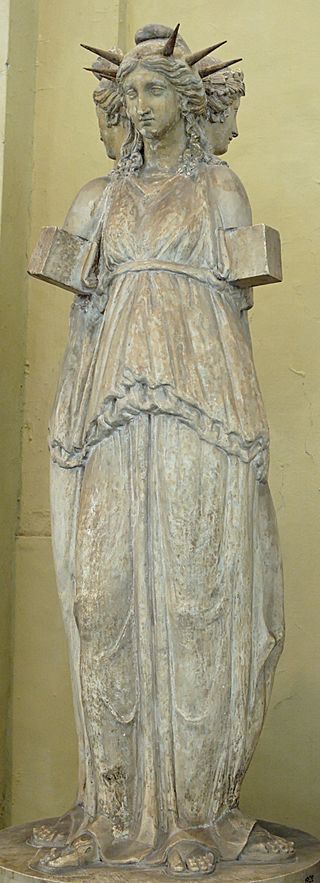 kid’ on the block. Based on what I’ve seen so far of this new kid, I’m pretty sure the ‘old kids’ aren’t too happy with it. Something – a collection of beings in a trench coat masquerading as something else is trying to come onto their turf. And as humans, the creators and consumers of stories that shape the dominant consensus, we’re faced with a choice (another one).
kid’ on the block. Based on what I’ve seen so far of this new kid, I’m pretty sure the ‘old kids’ aren’t too happy with it. Something – a collection of beings in a trench coat masquerading as something else is trying to come onto their turf. And as humans, the creators and consumers of stories that shape the dominant consensus, we’re faced with a choice (another one).